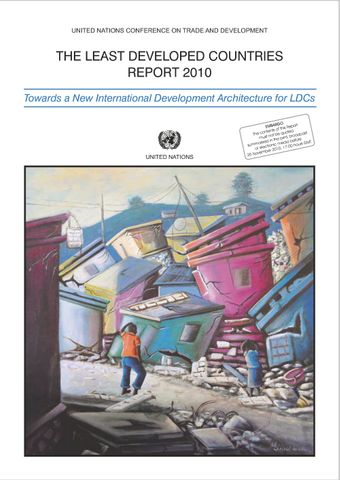The contours of a new international development architecture for LDCs

- Author: United Nations Conference on Trade and Development
- Main Title: The Least Developed Countries Report 2010 , pp 83-114
- Publication Date: February 2011
- DOI: https://doi.org/10.18356/8cd569e5-en
- Language: English French, Spanish
This chapter presents a conceptual framework for the design of a New International Development Architecture (NIDA) for LDCs. NIDA is defined as a new architecture of formal and informal institutions, rules and norms, including incentives, standards and processes, which would shape international economic relations in a way that is conducive to sustained and inclusive development in the LDCs. The objectives of such a NIDA are: (a) to reverse the marginalization of LDCs in the global economy and to help them catch up; (b) to support a pattern of accelerated and sustained economic growth which would improve the general welfare and well-being of all people in the LDCs; and (c) to help LDCs graduate from LDC status. These objectives could be achieved through a greater emphasis on the development of productive capacities of LDCs and through a renewed role of the State in promoting development. The new architecture is intended to influence and shape the economic behaviour of all agents within the domains of finance, trade, commodities, technology, and climate change adaptation and mitigation. The NIDA for LDCs should be part of a broader set of systemic reforms which need to be taken in the wake of the financial crisis and global recession, and which would be beneficial for all countries, both developed and developing.
© United Nations
ISBN (PDF):
9789210550758
Book DOI:
https://doi.org/10.18356/4b5fe06b-en
Related Subject(s):
Economic and Social Development
Sustainable Development Goals:
-
From This Site
/content/books/9789210550758c008dcterms_title,dcterms_subject,pub_keyword-contentType:Journal -contentType:Contributor -contentType:Concept -contentType:Institution105
/content/books/9789210550758c008
dcterms_title,dcterms_subject,pub_keyword
-contentType:Journal -contentType:Contributor -contentType:Concept -contentType:Institution
10
5



